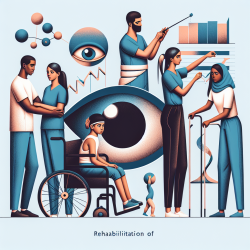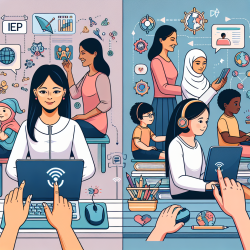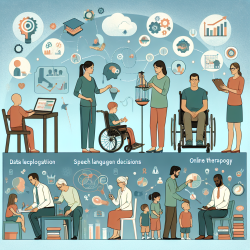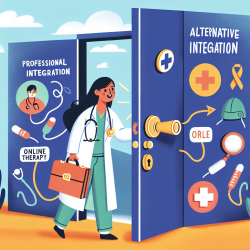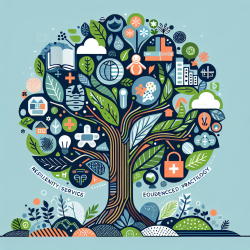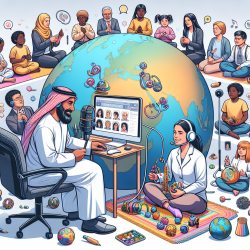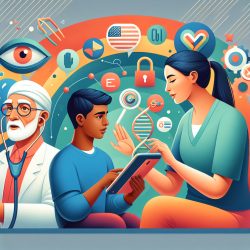Considerable progress has been made in saving the lives of children younger than 5 years. Nevertheless, these advances have failed to help all children thrive, particularly children with disabilities. We describe the increasing prevalence of disability among children and adolescents. We evaluate the current situation regarding children with disabilities and rehabilitation in the context of health systems, particularly those in low- and middle-income countries. Within the newborn health agenda, congenital anomalies often require early intervention and rehabilitation. We provide Argentina as an example of a country where rehabilitation for congenital anomalies is integrated into the health system. We argue that congenital anomalies that require rehabilitation have the potential to strengthen rehabilitation systems and policies by:
- Strengthening coordination between primary care and rehabilitation;
- Identifying and understanding pathways that allow families to engage with services;
- Providing human resources for rehabilitation;
- Building systems and resources that support assistive technology and rehabilitation.
We propose ways for countries to prioritize and integrate early identification, referral, and care for children with congenital anomalies to strengthen health systems for all. We identify opportunities to expand policy and planning and to design service delivery and workforce strategies through World Health Organization guidelines and frameworks for rehabilitation. We argue that the global health community must act to ensure that rehabilitation services to support functioning from birth are well established, accepted, and integrated within health systems, and that disability is prioritized within child health. These steps would strengthen health systems, ensure functioning from birth, and make rehabilitation accessible to all.
Prioritizing Rehabilitation
The need to strengthen early intervention and rehabilitation is recognized within the "survive and thrive" newborn health agenda to ensure the greatest benefit for millions of babies at risk of preventable long-term impairment. Specifically, congenital anomalies—conditions that involve changes in body structure or function that are present at birth—are a common cause of disability in children and benefit from rehabilitation that starts early. The 2020 World Health Organization (WHO) guidelines on standards for improving quality of care for newborns in health facilities recommend that all newborns be assessed for congenital anomalies, managed appropriately, and referred in a timely manner. This guidance is important because in 2019, congenital anomalies were the 10th most important cause of loss of health globally. Congenital anomalies affect 6% (60/1000 live births) of the global population, with more than 90% of cases estimated to occur in low- and middle-income countries. Most congenital anomalies in low- and middle-income countries are underreported and untreated even though most cases can be improved, managed, or treated with appropriate health care. Early detection and rehabilitation are critical, not only for developmental outcomes but in determining whether children access rehabilitation at all.
Strengthening Systems and Policies
Systems and policies to support rehabilitation in children with congenital anomalies do not have to be at odds with providing health care for all. Moreover, they may provide an entry point to make rehabilitation accessible to all. Clubfoot and limb reduction are good examples of congenital anomalies that are easily recognizable and detected at birth and require early intervention to support functioning. Rehabilitation and assistive technology can result in substantial, sometimes complete, improvement of function for children with clubfoot and limb reduction. Both conditions require service provision by physiotherapists or similar types of rehabilitation professionals. The conditions also require a series of assistive products to be worn over years to support functioning. Management of both these conditions requires regular follow-up with a health provider, allowing regular contact for children with the health system, and providing opportunities to address any other emerging health issues. This interaction offers the possibility for more holistic care for children and adolescents as they grow and develop.
The Case of Argentina
Argentina is an example of a country that has prioritized systems for integrating early identification, referral, and care for children with congenital anomalies. The National Network of Congenital Anomalies of Argentina started in November 2009 in four provinces in Argentina as a hospital-based registry. The Network expanded its objectives from finding causal factors and generating and disseminating epidemiological information about the prevalence of congenital anomalies to improving care for affected newborns. The systems-level impact of Argentina's integrated rehabilitation has resulted in multifaceted benefits for newborns and older children, their families, and service providers. The Network collaborates with, and supports, the main public and private maternity hospitals of the 24 jurisdictions of the country covering about 300,000 births a year. This coverage equates to 62% (300,000/483,871) of births in the public sector and 43% (300,000/697,174) of births in Argentina. This outcome was achieved through adopting a comprehensive systems-level approach, despite a context where health systems are fragmented and some health services are scarce. For instance, the Network is the coordinating center for newborns identified with cleft lip and cleft palate in partnership with the Sumar program. The Sumar program of the health ministry emphasizes preventive health-care services for uninsured people, while mandating predefined quality standards for the services provided; the program pays provinces based on their performance against specific health goals. A toolkit for the health care needs assessment, the Public Health and Genomics Foundation toolkit supported Argentina's needs assessment and the development of services and interventions for children with congenital anomalies. Among other activities, health professionals from different levels of care, with an emphasis on primary care, are supported through training programs and information collected by the Network is disseminated to stakeholders, including the participating clinicians who are empowered to use their own processed data. The outcomes of this systems-level approach include: an increase in numbers of affected children being referred to services each year; informed and engaged public and parents; increased numbers of trained health-care providers; and policy-makers assisted to implement services for care and prevention programs. Challenges in integrating rehabilitation into the health system have included coordination of multiple stakeholders and meeting the demand of the population for genetic diagnosis and counseling.
The Way Forward
We foresee several ways for countries to prioritize and integrate early identification and referral of and care for children with congenital anomalies, and thus to strengthen health systems for all. Identifying children with congenital anomalies within the primary care system and referring them for care would strengthen coordination between primary care and rehabilitation. This approach would also address policy and leadership gaps for rehabilitation at health ministries and in health systems governance. Nurses, midwives, skilled birth attendants, and community health workers need to be trained in their roles to:
- Recognize conditions at birth;
- Provide accurate parent education on congenital anomalies which may reduce stigma, misinformation, and risks to the child of abuse or neglect;
- Refer children for rehabilitation.
Their role strengthens the important pathway for all impairments diagnosed in infancy and early childhood, and the capacity developed will not only benefit children with these conditions but others as well. At the community level, stigma, negative attitudes of caregivers and health-care providers, and a lack of knowledge and skills among health workers are barriers to early intervention. Identifying and understanding the pathways that allow families to engage with services, and the barriers they encounter, will inform the planning of accessible rehabilitation. One example may be to design education resources with caregivers, who can give unique insights about their challenges and situations. In turn, caregivers can be appropriately informed and engaged with services. Likewise, building capacity and expertise and providing human resources for rehabilitation can be achieved through promoting education of health-care providers, as in the case of Argentina. Increasing the sensitization and education of health workers can result in higher rates of referral and better information given to parents at the point of referral.
Conclusion
Rehabilitation needs a focus to move beyond rhetoric to strategy and harness political will and resources. A strategy that prioritizes identifying and supporting babies with congenital anomalies can strengthen rehabilitation and assistive technology delivery for children and adolescents with other conditions. A rights-based approach is vital. This approach requires a fundamental shift in understanding that the functioning of an individual is central to population health and to society, and equal in benefit to preventing disability and death. By prioritizing disability in child health, governments and global agencies can support the health system infrastructure required to enhance rehabilitation and disability-inclusive services for all. To read the original research paper, please follow this link:
Provision of rehabilitation for congenital conditions.
